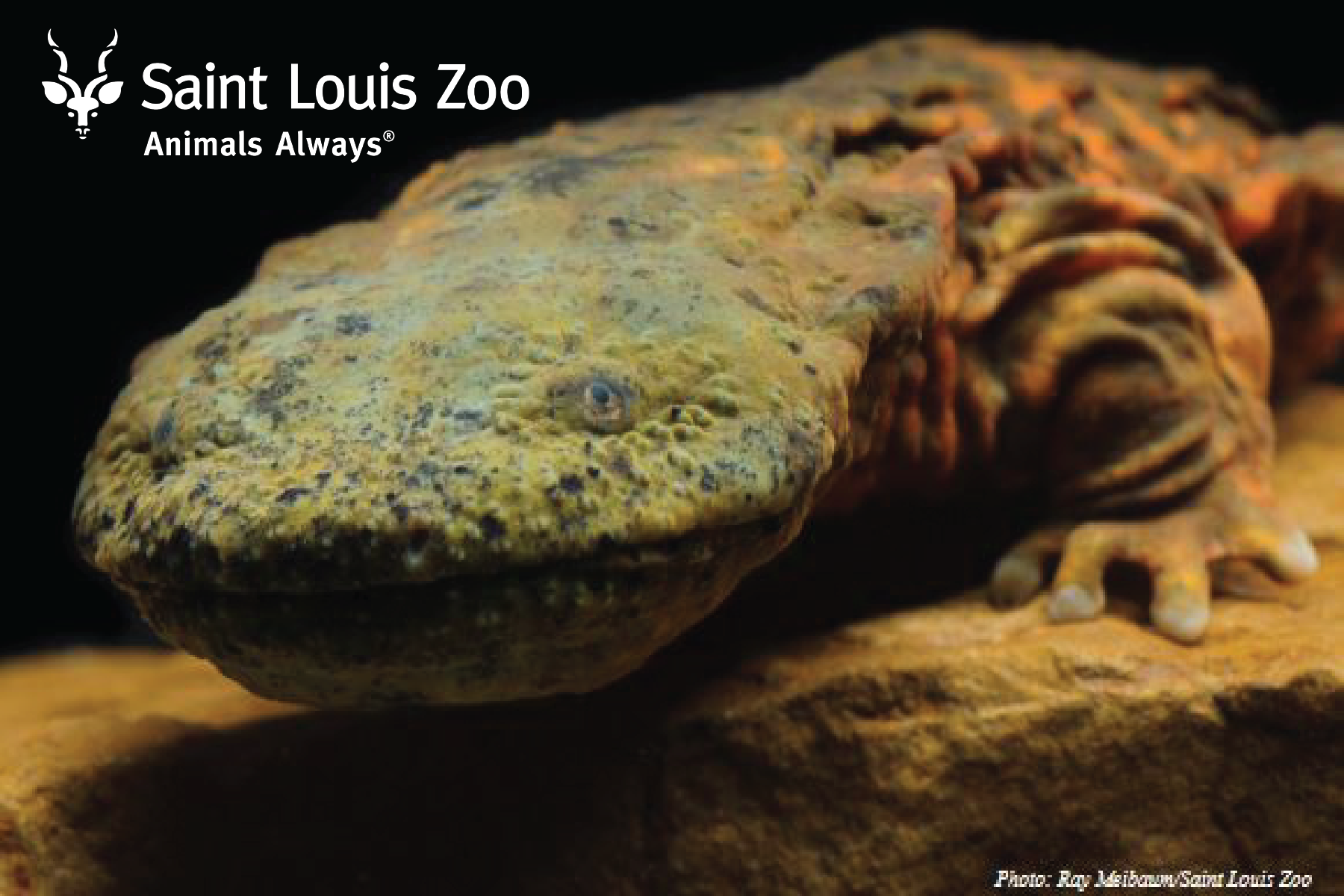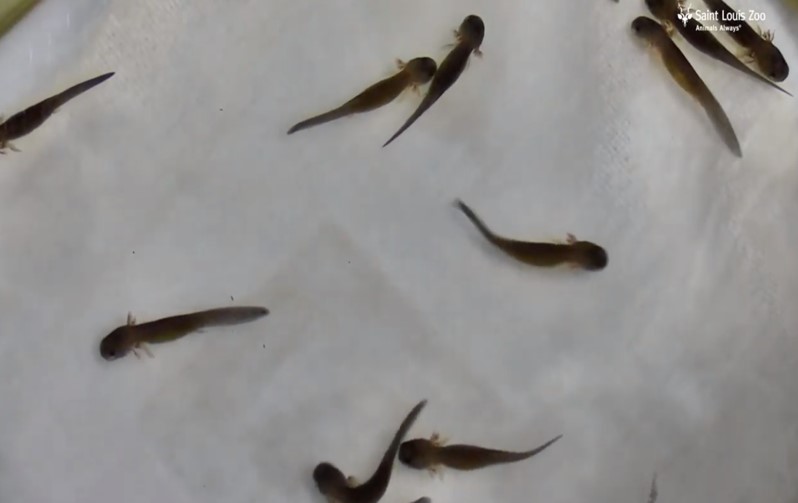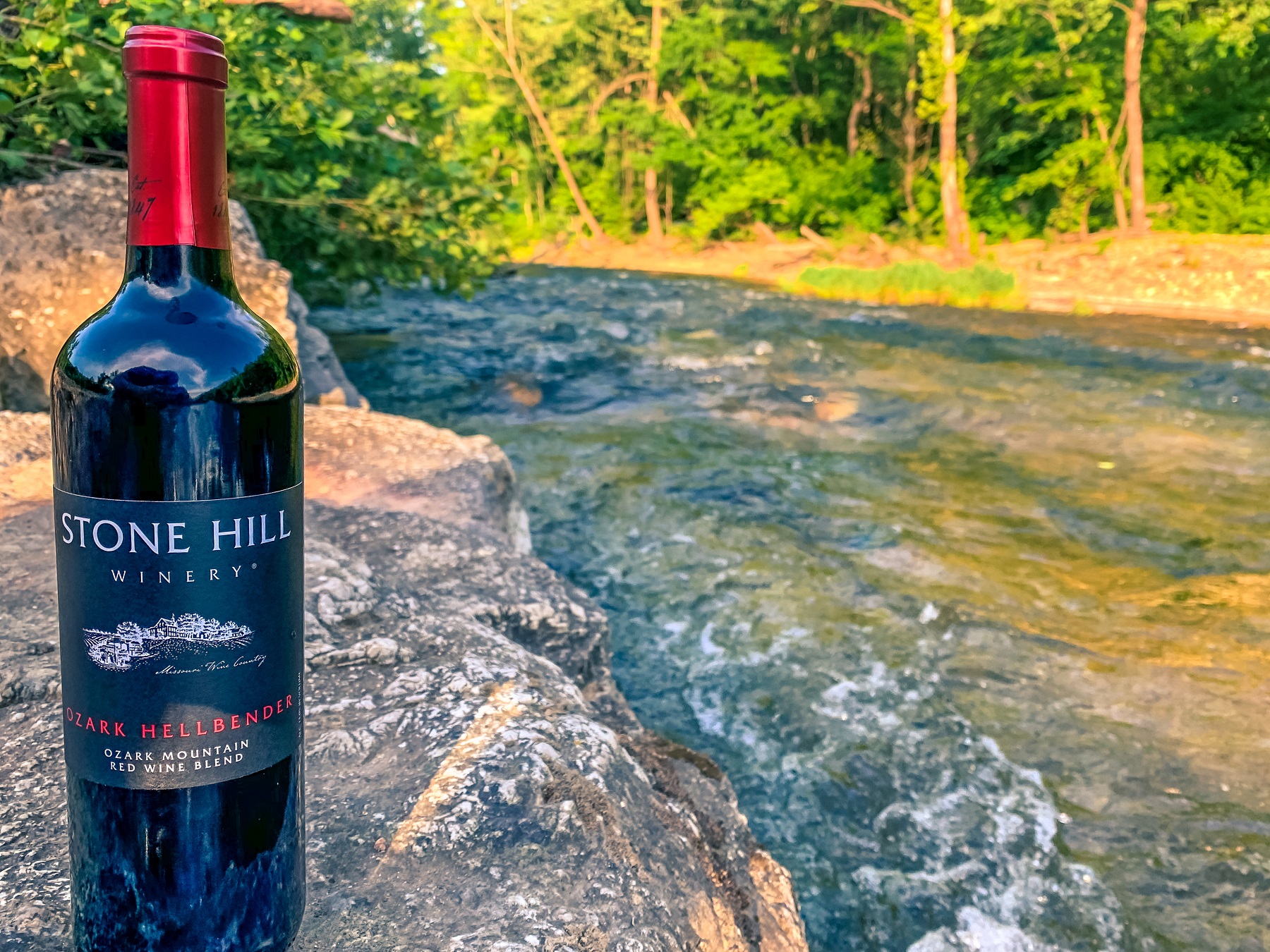
Affectionately nicknamed the snot otter, the Ozark hellbender is more critical to Missouri’s ecosystems than you might think. Hellbenders are aquatic salamanders about two feet in length, and the subspecies Ozark hellbender is found only in the rivers of the Ozarks. These salamanders are the largest in North America and are closely related to the giant salamanders of China and Japan. Hellbenders serve as critical indicators of the overall health of a river; if hellbender populations continue to decline, it tells us that other species are at risk as well, including us.
The Ozark hellbender’s numbers have decreased by over 70% since 1990, and it was categorized as endangered in 2011. There are several factors contributing to this including habitat loss and pollution, since these fresh-water animals breathe through their skin and therefore absorb pollutants in the water. A highly infectious fatal disease called “chytrid fungus” is further decreasing their numbers. And most critical of all, there seems to be a lack of reproduction among the hellbenders and scientists are working to find out why.

The Saint Louis Zoo is taking action to save the Ozark hellbenders, and Stone Hill Winery wanted to help too. Nathan Held, son of owners Jon and Karen Held and a university business student, has loved looking for the shy and elusive Ozark hellbenders at the zoo since he was young. When Stone Hill Winery was recently developing a new wine, he proposed naming the wine after his favorite amphibian—and partnering with the Saint Louis Zoo to raise money and awareness for the cause.
The Saint Louis Zoo’s Ron Goellner Center for Hellbender Conservation is a program that researches the root of the hellbenders’ decline and attempts to increase their population through a captive breeding program. The Saint Louis Zoo is home of the world’s first successful captive breeding program of Ozark hellbenders and this past October, a second generation of captive-bred Ozark hellbenders were hatched successfully at the zoo.

Stone Hill Winery introduced the Ozark Hellbender wine in 2018, a semi-dry red blend with fruity undertones. Stone Hill Winery’s Ozark Hellbender red blend wine has quickly become a fan favorite with all red wine lovers. Stone Hill Winery has proudly partnered with the Saint Louis Zoo to help the endangered salamander, and you can help too, with a portion of every wine bottle sold is donated to the Zoo’s hellbender center.